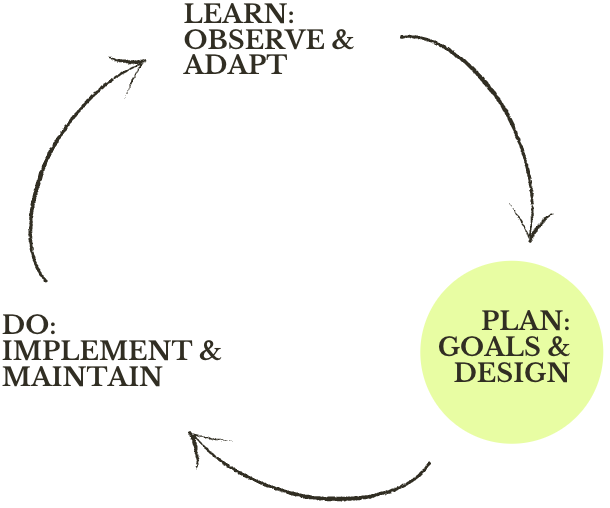PLAN: Goals & Design
Taking time to plan means you’ll get the best results, avoid disappointment, and reduce long-term costs. Planning starts with being clear about the goals driving your land stewardship.
Stewarding the land is an ongoing process.
- Walk the locations you are stewarding in every season.
- Build a relationship with the land over time to create results aligned with your values and goals.
- Monitor the activities of contractors and workers to ensure their work aligns with your values.
As you plan, think about:

“If you don’t know where you’re going, you will probably end up somewhere else.”
— Laurence J. Peter
Step by step
1. Know your goals: The essential first step is to be clear about your goals and intended outcomes. Your goals determine your stewardship plan.
2. Assess the land: Understand the land’s ecological systems, history, and potential by filling out a land inventory.
- Talk to previous stewards, visitors, and long-time neighbors.
- Invite expert advisors to walk the land with you to share their perspectives and knowledge.
- Practice observing How Land Works through seasons and over time. Understanding land is a life-long, deeply satisfying practice.
3. Consider Opportunities And Constraints such as accessibility, required permits, and expenses, all of which create trade-offs.
4. Make a written plan to collate what you’ve learned into a step-by-step, practical stewardship plan you can share, that lays out actions over time for different areas of the land.
Example plan that emphasizes long-term ecological function: Wildlands Preserve Stewardship Plan.
Example planning guides that include harvesting trees for an economic return:
- This planning guide from UCANR.
- RCD Landsmart Forest Management Plan Template




